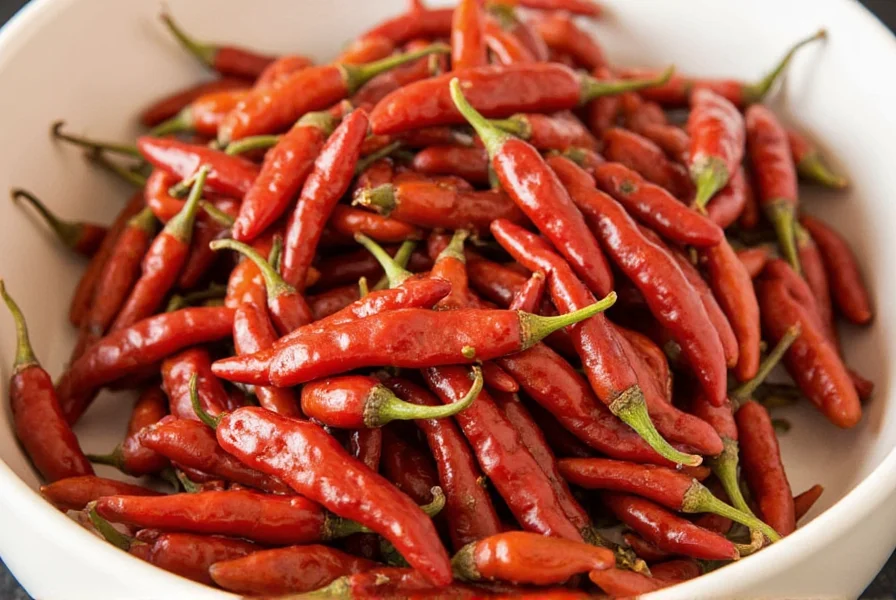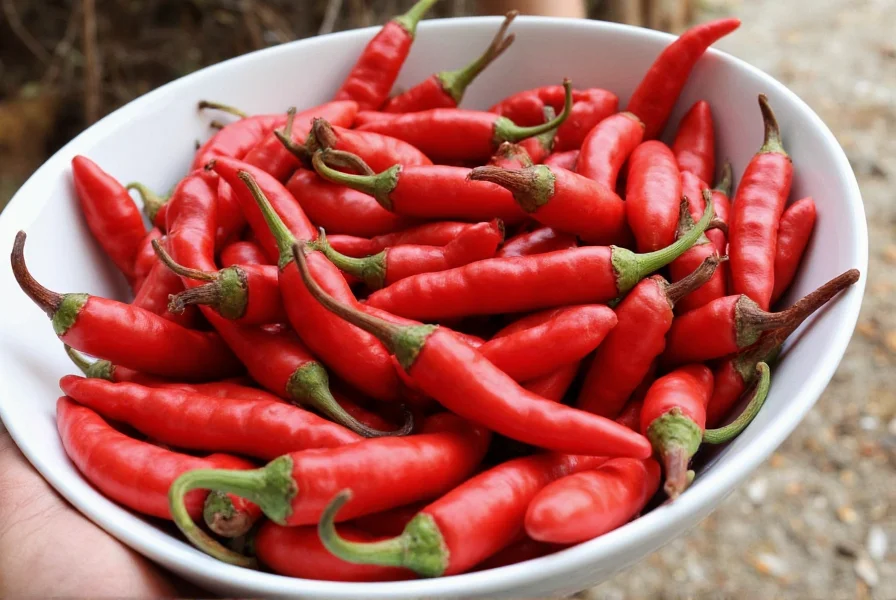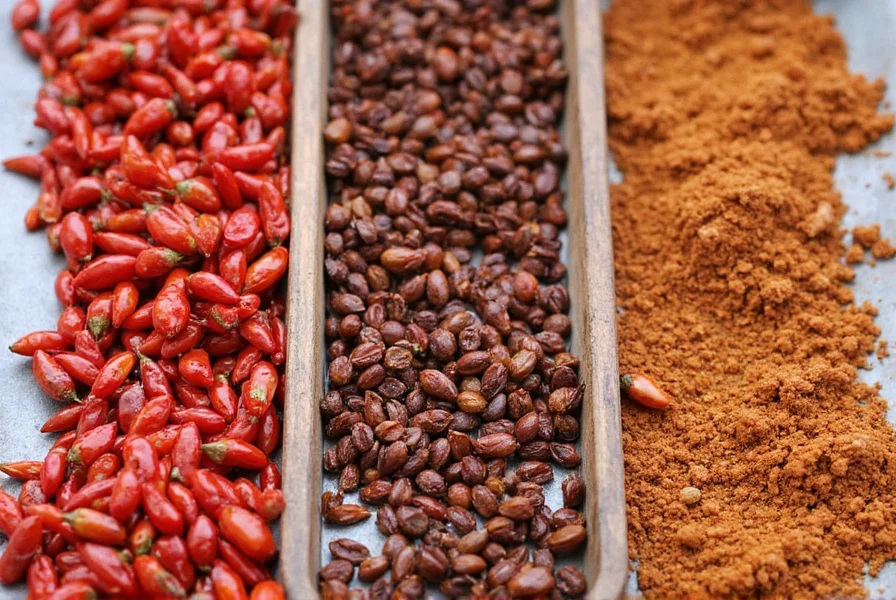Spice Chronicles: Guajillo Chili – The Unsung Hero of Global Flavors
If you're a food lover with a passion for global cuisine, chances are you've encountered the guajillo chili without even realizing it. From smoky Mexican moles to fiery salsas and beyond, this unassuming red pepper has quietly shaped countless culinary traditions across the globe. But what exactly makes the guajillo chili so special? Is it the perfect balance of heat and flavor? Its versatility in cooking? Or perhaps its deep cultural significance?
Table of Contents
- What is a Guajillo Chili?
- Heat Level & Flavor Profile
- Culinary Uses Around the World
- Why You Should Love This Spice
- Buying Guide: Choosing the Best Guajillo Chilies
- Pro Tips for Cooking with Guajillo
- Storage & Preservation
- Guajillo vs Other Chilies: A Side-by-Side Comparison
- Conclusion: The Red Jewel of Global Kitchens
What is a Guajillo Chili?
The guajillo chili (Capsicum annuum) is a dried form of the mirasol chili, commonly used in traditional Mexican cuisine. It’s elongated, reddish-brown in color, and often found hanging in bunches at markets across Mexico, Central America, and parts of South America.
While many people associate Mexican cuisine with hotter peppers like habaneros or serranos, the guajillo brings something entirely different to the table: complexity. It's known for its subtle heat and layered flavors that make it ideal for slow-cooked sauces, marinades, and stews.
Heat Level & Flavor Profile
If you're wondering how spicy the guajillo chili is, here's the lowdown:
| Chili Name | Scoville Heat Units (SHU) | Flavor Notes |
|---|---|---|
| Guajillo | 2,500 - 5,000 SHU | Smoky, fruity, slightly tangy |
| Jalapeño | 2,500 - 8,000 SHU | Grassy, bright, earthy |
| Poblano (Dried = Ancho) | 1,000 - 2,000 SHU | Sweet, mild, earthy |
| Habanero | 100,000 - 350,000 SHU | Tropical fruit, floral |
The guajillo sits comfortably on the lower end of the heat scale but makes up for it with rich, nuanced flavor. Think of it as the baritone of the chili world—deep, smooth, and harmonious.
Culinary Uses Around the World
The guajillo chili plays starring roles in several iconic dishes, especially in Latin American cuisine. Here’s where you’ll find it stealing the show:
- Mole Poblano: One of the most famous uses of guajillo chilies is in this rich, complex sauce made with chocolate, nuts, and spices.
- Salsas: Toasted and blended with garlic, tomatoes, and lime, guajillo makes an unforgettable roasted salsa.
- Adobo Sauces: Used in marinades for meats, especially chicken and pork.
- Stews and Braises: Simmered into soups and braised meats, giving depth and warmth.

But the story doesn’t stop there. With globalization, guajillo has begun appearing in fusion dishes from California to Copenhagen, showing that this chili has universal appeal.
Why You Should Love This Spice
So why should you add guajillo chili to your spice rack? Let’s break it down:
- Balanced Heat: Not too hot, not too mild—it hits just right.
- Complex Flavor: Smoky, sweet, and slightly tart—perfect for layering taste.
- Versatile Use: Works in sauces, rubs, soups, and more.
- Cultural Significance: Tapping into centuries of tradition every time you cook with it.
Buying Guide: Choosing the Best Guajillo Chilies
When shopping for guajillo chilies, here’s what to look for to ensure quality:
Visual Cues
- Color: Rich, deep red to brownish-red hue; avoid pale or faded ones.
- Texture: Slightly leathery but pliable—not brittle or overly dry.
- Seeds: Whole chilies usually have seeds inside; if they’re missing, they may be old or processed.
Product Types
Guajillo comes in multiple forms:
| Form | Description | Best For |
|---|---|---|
| Dried Whole | Traditional, used in sauces after rehydration | Authentic mole, salsas, adobos |
| Ground Powder | Convenient for quick seasoning | Rubs, soups, stews |
| Paste | Ready-to-use concentrated form | Marinades, fast sauces, grilling |
Brands to Try
- Goya Guajillo Chilies: Widely available, consistent quality.
- La Costeña Guajillo: Known for deeper flavor, often used by professional chefs.
- Organic Guajillo Powder by Santa Maria: Ideal for clean-label cooks and health-focused kitchens.
Pro Tips for Cooking with Guajillo
Here’s how to get the most out of your guajillo experience:
- Toast Before Using: Lightly toast the chilies in a dry pan to enhance their nutty, smoky notes.
- Remove Seeds for Less Heat: While the seeds carry some spice, they can also make sauces bitter.
- Rehydrate with Care: Soak in hot water or broth for 20–30 minutes before blending.
- Blend Smoothly: Use a high-speed blender or food processor for silky textures.
- Pair Thoughtfully: Guajillo loves chocolate, cinnamon, almonds, garlic, and citrus.

Storage & Preservation
Want to keep your guajillo chilies fresh for months? Follow these storage tips:
- Airtight Containers: Store whole or ground chilies in sealed glass jars or plastic bags.
- Cool, Dry Place: Avoid humidity to prevent mold growth.
- Freeze Ground Guajillo: For long-term preservation, freeze the powder in small portions.
- Label Everything: Mark dates and type to avoid confusion later.
Guajillo vs Other Chilies: A Side-by-Side Comparison
To help you choose the right chili for your next dish, here’s a side-by-side breakdown:
| Chili Type | Heat Level | Flavor Notes | Best Use |
|---|---|---|---|
| Guajillo | Mild to Medium | Smoky, sweet, tangy | Mole, salsas, adobo |
| Ancho | Mild | Sweet, raisiny, earthy | Mole, sauces, stews |
| Pasilla | Mild | Fruity, berry-like, herbaceous | Moisture-rich sauces |
| Arbol | Hot | Nutty, grassy, sharp | Hot sauces, oils, soups |
| Morita | Medium-Hot | Smoky, tangy, meaty | Meat marinades, tacos |
If you want a deep, balanced flavor without overpowering heat, guajillo is your go-to. For smokiness with a kick, morita might be better. But for that perfect blend of warmth and depth, nothing beats guajillo.
Conclusion: The Red Jewel of Global Kitchens
In a world full of fiery trends and fleeting fads, the guajillo chili remains a timeless classic. Whether you're simmering a pot of mole, crafting a weekend salsa, or experimenting with global flavors, this versatile pepper delivers unmatched flavor and heritage.
It’s more than just a spice—it’s a bridge between cultures, a whisper of history in every bite, and a reminder that sometimes, the quietest ingredients speak the loudest. So the next time you reach for that bag of guajillos, know you're tapping into a legacy that stretches across continents and generations.
Happy cooking, and may your kitchen always be warm—with just the right amount of heat!











 浙公网安备
33010002000092号
浙公网安备
33010002000092号 浙B2-20120091-4
浙B2-20120091-4